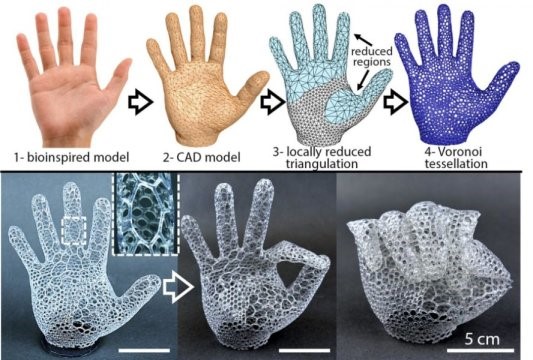Human-like robots with soft bodies that can care for older adults in hospitals and nursing homes may sound like the stuff of science fiction, but soft-formed, caregiving robots created through 3D printing technology could be right around the corner. And the technology may become mainstream just in time to care for an ever-growing population of adults ages 60+, which is expected to double by 2050.
Already, caregiving robots are programmed to ask questions a nurse would ask and can monitor patients for falls. These robotic assistants are expected to become increasingly marketable and reach 450,000 by 2045 because of the expected caregiver shortage in the United States.
But the external hard structure of today’s robots limits their capabilities. Recent advances in material science, however, have enabled the fabrication of robots with deformable bodies or the ability to reshape when touched. And now, researchers at Purdue University have developed a new design method that shows promise in enabling the efficient fabrication of soft robots using a 3D printer, which could lead to eventual commercialization of the technology.
The design process involves three steps. First, a user makes a computer-aided design file with the shape of the robot. The user then paints the CAD file to show which directions the different joints of the soft robot will move. A fast computer algorithm takes a few seconds to convert the CAD model into a 3D architected soft machine (ASM) that can be printed using any conventional 3D printer.

The architected soft machines move like humans, except instead of muscles they rely on miniaturized motors that pull from nylon lines tied to the ends of their limbs. They can be squeezed and stretched to more than 900 percent of their original length.
These architected soft machines (ASMs) can perform complex motions, such as gripping or crawling with ease and represents another step in the development of autonomous and lightweight soft robots able to offer caregiving and disaster response services.
Story via Purdue University

